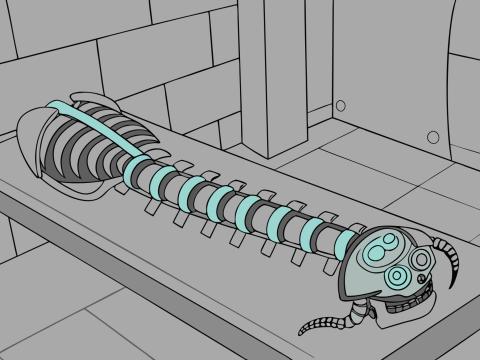Tackling Technology's Valley of Death
The “Valley of Death” is as ominous as it sounds.
The inability to transition new technologies from the laboratory into production sometimes prevents our nation from adopting cutting-edge advances that could benefit national security and defense.
Make no mistake, the United States, along with its allies and partners, enjoys a science, technology, research and development community that is a global powerhouse, continually pushing scientific boundaries and providing regular breakthroughs. That vital community is made up of U.S. and international government and military researchers, academia and industry, including startup businesses that are sometimes run out of an inventor’s home.
Historical breakthroughs that provided a technological advantage included horse-drawn carriages, bayonets, steam engines, airplanes and the internet. Now, we see industry and academia driving breakthroughs in an array of areas such as cyber capabilities, cloud computing, artificial intelligence, directed-energy weapons, hypersonic flight and next-generation cellular communications.
The power of our innovative spirit is greatly magnified by the mighty contributions of our international friends. Our relationships with like-minded countries result in the sharing of information, ideas and innovation essential to the growth and security of all.
As potent as our military and government research institutions have been and continue to be, they cannot work alone and remain ahead of our adversaries—especially in the digital era’s rapidly evolving cyber domain. Unleashing the full potential of invention and innovation requires relationships at home and abroad with various partners in the broader research community. We are doing more than ever to foster those vital connections, and we must continually build on the progress we’ve made.
Despite headway, this transition-to-production problem continues to plague the research community. Experts cite multiple causes, including multiyear budget planning and drawn-out acquisition processes that tie the military and government to systems that can soon become obsolete.
The U.S. Government Accountability Office (GAO) issued a report in April outlining Valley of Death challenges facing directed energy weapons, and a quick search shows the term Valley of Death in GAO reports on artificial intelligence, advanced manufacturing, nanomanufacturing and next-generation air transportation.
The obstacles grow increasingly detrimental in an era of competition with peer and near-peer nations such as China.
The good news for the United States and its allies is that China may face its own version of the Valley of Death. Caixin Global, a Chinese media business, recently reported the country’s top four artificial intelligence (AI) companies face myriad funding hurdles. The report, “China’s AI Quartet Walk Through the Valley of Death,” quotes Yin Qi, co-founder of Megvii, as saying that China’s AI companies have entered the “Valley of Death” phase, referring, in this case, to the period in which startups have begun operations but have not yet generated revenue. The bad news is that Yin Qi made those statements in 2020 and estimated the troubling period might last 18 to 24 months, so China’s challenges may not equal our own.
It is heartening, however, to see the degree to which the military and government take this problem seriously. We are witnessing a rapid rise in the use of innovative tools, such as other transaction authorities, to field technologies faster. The White House, Congress, the Defense Department and others across government recognize the need to address the challenges.
These efforts capitalize on the hidden strengths of our own nation and those of our allies and partners. We can outpace our adversaries by aligning collective science, technology, research and development investments by government, industry and academia to focus on the most pressing security capabilities. We also can make the absolutely vital policy, procedural or cultural changes required to move us from a slow, risk-averse industrial acquisition system to appropriately risk-tolerant but speedier Digital Age acquisition processes.
It is ingenuity that fosters technological advances, and it is ingenuity that will fuel the governmental transformation required to use those advances.





Comments